Reach Out to Us!
BED BUGS
Scientific Name: Cimex lectularius
- Overview: Bed bugs likely get their name from their habit of taking refuge in beds and feeding on humans while they sleep. They feed only on blood and must have regular blood meals to survive and develop. Bed bugs have been associated with humans for more than 3,300 years and are found in virtually every place people tend to gather, including residences, hotels, schools, offices, retail stores, and public transportation. Bed bugs are great “hitchhikers,” allowing them to travel long distances. They latch onto suitcases, clothes, and linens and can end up wherever these items are taken.
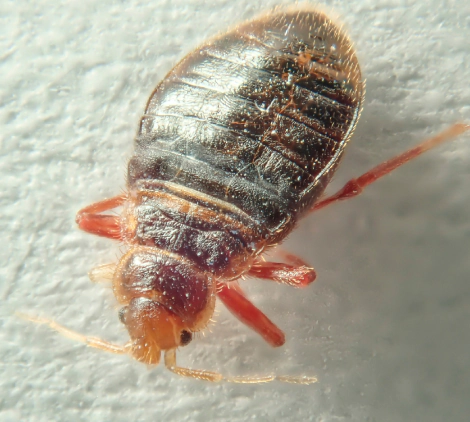
-
Bed bugs can be found in any location where humans congregate and spend extended time. It is important to be on the lookout for bed bugs when using public transportation or sitting in public spaces like libraries. In particular, hotel rooms should be thoroughly inspected before sleeping in the bed. Check the bedsheets for tell-tale blood spots or sightings of the bugs or eggshells. Use a small flashlight to assist with visual inspections. Additionally, never bring second-hand furniture, especially mattresses and box springs, into a home without thoroughly examining for signs of bed bugs.
-
Bed bugs are oval shape and only grow to about 3/16th of an inch in length, about the size of an apple seed. Prior to feeding, they are brown and flat. After feeding, bed bugs become more red in color, swollen, and elongated. Bed bugs have 6 legs and 2 antennae. Despite having reduced “wing pads,” bed bugs do not have wings and cannot fly. Adult bed bugs are visible to the human eye and can be detected by sight, especially within mattress seams and box springs. Bed bug nymphs can be harder to identify, as they are smaller in size and paler in color. Signs of a Bed Bug Infestation Bed bugs are most easily identified by small reddish-brown fecal spots on mattresses, upholstery or walls. If these spots are found, it can indicate an infestation. Bites on the arms and legs are also a tell-tale sign of bed bugs. Infestations can also be identified by sightings of bed bug molt skins, their eggs, empty eggshells, or the bugs themselves
-
Bed bugs are extremely elusive creatures so professional help should be sought out when dealing with an infestation. Bed bugs are a very difficult pest to treat. If you suspect or discover an infestation, contact us to address the issue.
All information and research can be found at Pestworld.org
GERMAN COCKROACH
Scientific Name: Blattella germanica Linnaeus
- Overview: There are about 4,000 living species of cockroaches in the world, 70 of which are found right here in the United States. If you’ve ever encountered a cockroach at home, a restaurant, or a public bathroom, it could have been an American cockroach, a brown-banded cockroach, an oriental cockroach, or a German cockroach. The German Cockroach is the most common species of cockroach found all over the world and in Colorado.
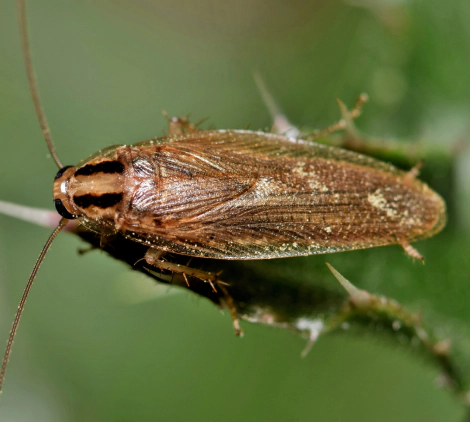
-
German cockroaches range in size from ½ inch to 5/8 of an inch long. They are light brown to tan in color and often distinguished by two dark stripes down their back.
-
German cockroaches prefer warm and humid environments, close to food and water sources. They frequently invade residential properties by hitchhiking in grocery bags, cardboard boxes, and secondhand appliances. Homeowners are most likely to find a German cockroach crawling around the bathroom or kitchen.
-
German cockroaches are more than just nuisance pests – they have been linked to disease transmission by picking up germs on the spines of their legs as they crawl through decaying matter. These germs are then transferred to food and other common surfaces that humans frequently touch. In fact, cockroaches are known to spread at least 33 different types of bacteria, six kinds of parasitic worms, and at least seven other human pathogens.
-
Practicing good sanitation is key to preventing an infestation, as cockroaches spend most of their time near food sources. Homeowners should make a concerted effort to keep kitchen counters and floors clean and free of crumbs. It’s also important to vacuum frequently and dispose of garbage on a regular basis. If you find one cockroach in your home, it’s likely there are many more hiding in cracks and crevices. German cockroaches can breed at a rate of up to six generations per year. If you suspect you have a cockroach infestation, contact us to properly identify the species and recommend an appropriate course of treatment.
All information and research can be found at Pestworld.org
NORWAY RATS
Scientific Name: Rattus norvegicus
- Overview: The Norway rat commonly referred to as the street or sewer rat, is believed to be of Asian descent but is the most common rat in Colorado. They arrived in the U.S. on ships from other countries in the 1700s. Today, Norway rats are found throughout the world. Norway rats have fairly poor vision and are colorblind. Despite this, their other senses, including hearing, smell, touch, and taste are exceptional. Although not extremely agile, they are capable of running, climbing, jumping and swimming. Norway rats are known to cause damage to properties and structures through their gnawing.
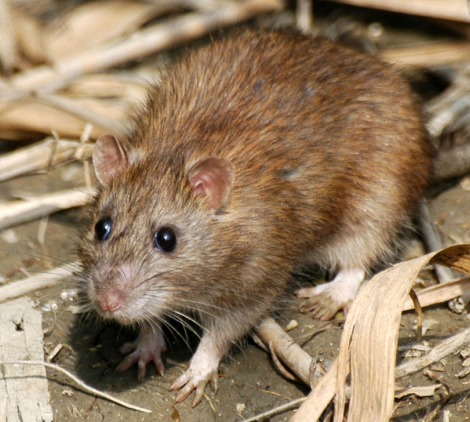
-
Norway rats have prickly brown fur, with black hairs dispersed throughout their coat. Their underside tends to be lighter, with gray to off-white coloring and even yellow tones. Norway rats have small eyes and ears, and their tails are shorter than the length of their head and body coupled together.
-
There are several obvious signs that a home has a Norway rat infestation. Gnaw marks throughout the house are one clue of the presence of Norway rats. New bite marks or holes tend to be rough, whereas older ones are smooth from wear and are also often greasy. Spotting droppings, which are capsule-shaped, is another key indicator of a Norway rat problem. Norway rats’ droppings have blunt ends, while those of roof rats have pointed ends.
-
Norway rats can reproduce quickly, giving birth to about three to six litters each year. This makes it all the more important to take proactive measures, such as Norway rat control, to prevent an infestation from taking root. Norway rats are often drawn to piles of wood, so homeowners should keep firewood stored well away from the structure and remove debris piles to reduce ideal nesting spots. It is also important to seal any holes on the outside of the home with steel wool to block potential points of entry. All food products should also be properly sealed in containers to avoid any contamination, which can lead to disease transmission. Likewise, garbage should be tightly enclosed in trash cans that are regularly emptied outside of the home so as not to serve as food attractants.
-
The safest and most effective way for homeowners to get rid of Norway rats is to work with our pest control professionals. We will assess the situation and develop an integrated pest management (IPM) plan to successfully eradicate the rodents.
All information and research can be found at Pestworld.org
PIGEONS
Scientific Name: Columba livia
- Overview: Pigeons, also known as Rock Doves, are monogamous and will lay one to two eggs which hatch within eighteen days. Young are fed “pigeon milk” which is regurgitated food from both males and females. While mating occurs year-round, the peak mating seasons are spring and fall.

-
Pigeons prefer grains for food and people will commonly feed pigeons unintentionally by spilling food or leaving it in open trash containers. Pigeons roost in areas above ground and will readily nest in steeples, as well as voids on outside areas of buildings and other protected areas.
-
Pigeons are dependent on humans to provide them with food, roosting, and nesting sites. They are commonly found around agricultural areas as well as warehouses, feed mills, and grain elevators. They are also commonly found in cities around parks, buildings, bridges, and other structures.
-
Pigeons are filthy birds, causing disease and damage. Their droppings are known for triggering human slips and falls, as well as accelerating the aging of structures and statues. This makes it imperative to get rid of pigeons in highly trafficked areas. More seriously, pigeons may carry diseases such as cryptococcosis, toxoplasmosis, salmonella, food poisoning, and more. Other pests may live on these birds, including fleas, lice, mites, ticks, and other pests.
-
To prevent or get rid of pigeons, homeowners need to make roosting and nesting areas inhospitable. For proper pigeon control, fill in access to voids, and slope resting areas, and prevent landing by using devices. Scare balloons, plastic birds, or plastic snakes rarely work except for a very short period. Keep all food and standing water out of reach of pigeons. If none of these prevention techniques work, contact us immediately to discuss a proper course of pigeon control.
All information and research can be found at Pestworld.org
RACCOONS
Scientific Name: Procyon lotor
- Overview: Raccoons, also nicknamed “coons” for short, are mammals that are rarely seen during the day because of their nocturnal habits. Raccoons are found throughout the United States but are most common in the wooded eastern portions of the country but are also prevalent in Colorado.
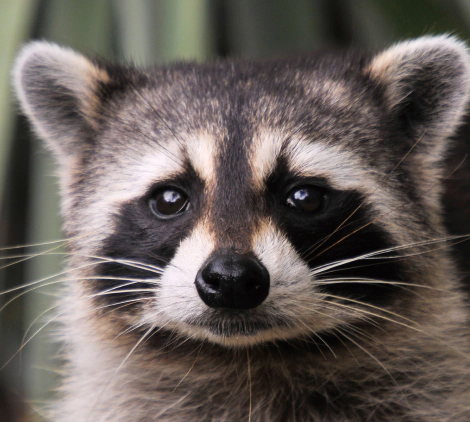
-
Raccoons are mid-sized animals that are about 2-3 feet long. Their bodies are stocky, round, and covered in salt-and-pepper-colored fur. Raccoons are known best for the “black mask” of fur around their eyes, also known as a “bandit mask,” and black rings around their furry tails.
-
While not all raccoons have rabies, raccoons in general are major hosts of rabies in the U.S. Just because a raccoon is active during the daytime, that doesn’t necessarily mean it’s carrying rabies. However, there are some indicators that a raccoon could be infected with the rabies virus. Key symptoms of a rabid raccoon include confusion and disorientation, leg paralysis or difficulty walking with wet and tangled hair, significant aggression, and production of very loud, unusual noises. Rabid raccoons may also foam at the mouth and have watery eyes.
-
The key signs of a raccoon infestation are both visual and audible. Damage to a home’s insulation, wood, shingles, electrical wiring, walls, or other parts of the structure is a telltale sign that a raccoon has taken up residence inside. Another indication of a raccoon infestation is the presence of droppings, urine stains, or built-up materials from creating a nest. Additionally, raccoons often raid and can make a mess of contents in garbage cans while they are in search of food. Hearing loud thuds and noises from raccoon movement can also signify a homeowner has raccoons in the home.
-
There are various precautions that homeowners can take to try to prevent a raccoon infestation from taking root. First, raccoons can find access into homes through broken vents, holes, uncapped chimneys, and other openings along the roof, which is why homeowners should regularly inspect, repair, and seal any of these or other potential points of entry. Loose siding and shingles should also be repaired, and it’s also helpful to install a mesh cover or cap over chimneys and other exposed openings to prevent entry.
Homeowners should store trash in sealed areas. Birdseed, bird feeders, and fountains should also be removed, as they are sources of sustenance for raccoons and other wildlife. Likewise, built-up debris, brush, and leaves can serve as perfect hiding spots and dwellings for raccoons, so it’s important to regularly rid the yard of these piles.
If an infestation is suspected and you need additional information regarding how to get rid of raccoons, contact us to inspect the property and formulate a plan to relocate the raccoons.
All information and research can be found at Pestworld.org
TREE SQUIRRELS
Scientific Names: Sciurus spp., Tamiasciurus spp.
- Overview: Tree squirrels get their common name from the fact that they are found in wooded and urban areas with trees. They nest, avoid predators, and harvest food in trees. “Tree squirrels” is an all-encompassing term for several species, including fox squirrels, gray squirrels, flying squirrels, and pine squirrels. The most common squirrel in the Front Range is the fox squirrel.
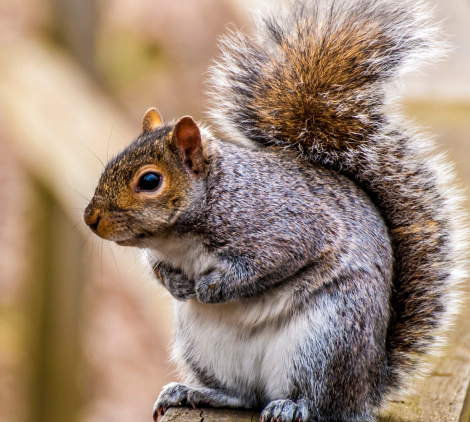
-
Fox squirrels are approximately 19-29″ in length. Their color may vary by their surrounding habitat and regions in which they are established. Gray squirrels have bodies that are 8 to 10 inches long and tails that are 7.5 to 10 inches long. Their fur is dark gray with intertwined sections of paler gray. Pine squirrels, which are also called red squirrels, have bodies that are 7 to 8 inches long and tails that are 4 to 6 inches long. Their fur is rust red or gray on top with white or grayish-white undersides and tails with black bands and white edges.
-
Fox squirrels feed mainly on hickory nuts and acorns but also eat the fruit of tulip poplar, maple tree seeds, corn bordering woods, berries, bird eggs, and fungi. Gray squirrels feed primarily on nuts, especially hickory nuts, acorns, beechnuts, and walnuts. In addition, they occasionally feed on maple or tulip tree seeds, fruit, opening buds, and corn. Pine squirrels feed on a great variety of seeds, nuts, berries, bird eggs, and fungi. As an interesting fact, tree squirrels may also eat small insects, caterpillars, small animals, and young snakes.
-
Signs of tree squirrel infestation include noises from squirrels in attics, chimneys, walls, or vents; holes in siding; damaged bird feeders; chewed wires; attic insulation damage; and evidence of squirrel nests in the attic. It is recommended to seal all possible points of entry around the house, including small openings and cracks around doors and windows. Screening vents and openings to chimneys can also prevent squirrels from entering homes. Food should be kept in airtight containers and garbage disposed of regularly. Additionally, tree limbs should be cut back 6 to 8 feet from the roofline. The use of mesh or wire fences can help protect gardens. Lastly, thorough inspection of wires, insulation and walls for gnaw marks will help signal a possible infestation. If you find feces, hear sounds of scurrying in the walls, or observe other signs of an infestation, contact us to inspect and relocate the squirrels if needed.
All information and research can be found at Pestworld.org
YELLOW JACKETS
Scientific Names: Vespula Maculifrons
- Overview: Yellowjackets are a very common summer and fall pest in the United States, and while they are grouped in the general category of stinging insects, yellowjackets have some pretty unique characteristics. Understanding what sets yellowjackets apart is the first step in controlling them on your property and reducing the likelihood of stings.
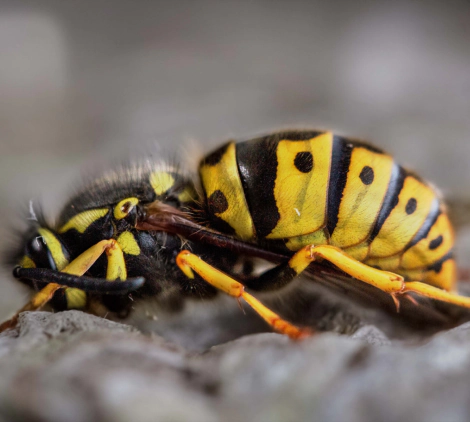
-
Not surprisingly, yellowjackets get their common name from their typical black and yellow color pattern banded across their abdomens. They are primarily flying insects, similar to bees, but are more noticeably segmented with a very small ‘waist.’ Yellowjackets, wasps, and hornets may look alike and have similar characteristics, but they can be very different in their level of aggressiveness and their habits.
-
Yellowjackets are found worldwide, and there are about 16 species that reside in the U.S. They are social insects that have annual colonies; only the queen lives through winter to start a new colony in the spring. Depending on the species, the queen will pick either an underground or aerial site to build her nest. Common places for a nest are attached to bushes, trees, or the eaves of homes. Yellowjacket nests are built with a recognizable paper-like material made from chewed cellulose.
-
Like many other flying insects, adult yellowjackets feed on sugary substances such as flower nectar, fruit, and the occasional soda when they find an open can. What makes yellowjackets unique is that they consume protein in their larval stage.
-
Yellowjackets are normally very slow to sting, but they are also very territorial. If the entrance to their nest is approached, they will become very aggressive. They can sting multiple times, and their stings can be very painful. People who are allergic to their venom could have a severe reaction, and it is possible to become hypersensitive to yellowjackets after being stung.
It is very important, if you believe there is a yellowjacket nest on your property, to call a professional. Attempting to remove the nest without a professional could result in being stung or driving the insects into your home.
All information and research can be found at Pestworld.org
Get In Touch With Us
Ready to book a service? Contact us today!
-
Call Now
-
Email
-
Location
Castle Rock, CO


